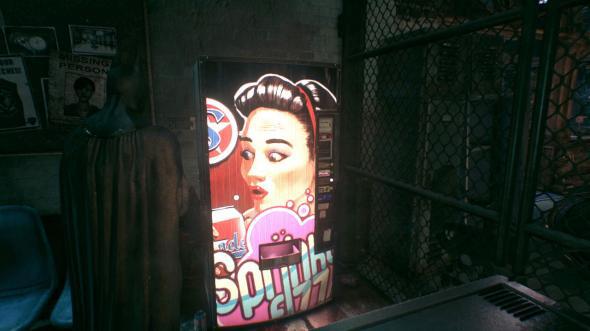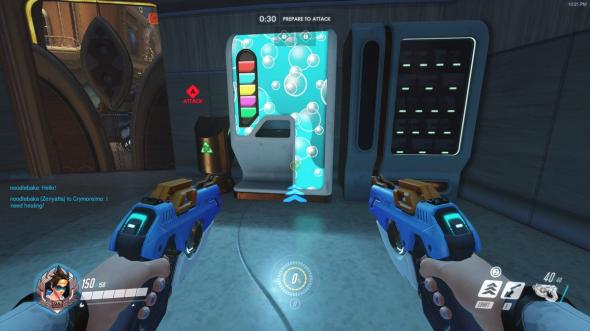There are few constants in the history of video gaming. But if one thing links all those role-playing games and first-person shooters, beat-’em-ups and adventure games, it’s probably the soda machines.
By way of evidence, look no further than the Video Game Soda Machine Project, a comprehensive—and constantly growing—archive of screenshots from video games new and old, each of them featuring a soda machine.
Maintained by political science professor and amateur game designer Jess Morrissette, the VGSMP features astonishing array of images. Morrissette began his archive in August 2016 while playing Batman: Arkham Knight, where he spotted a machine that initially intrigued him for its incongruity. “I just thought it was interesting, in this very dark and shadowy game, to see this really brightly lit up soda machine pop up out of nowhere,” he told me.

VGSMP
Thinking others might share his amusement, he posted a screenshot on Twitter, and before long his followers were helping him identify other examples. “What started out as a joke became a kind of fun challenge, just seeing how many of these we could track down,” Morrissette said.

VGSMP
Since then, Morrissette has accumulated more than 500 examples. There’s a soda machine propped up against a wall in the 1995 Beavis and Butt-Head in Virtual Stupidity and another in the seminal Final Fantasy VII. There are the enticing ones found on the streets of Overwatch and others shining in the corridors of DARK. You may not be able to find one in every game, but Morrissette’s collection makes a compelling case that they’re unexpectedly frequent.
In the course of assembling his archive, Morrissette has come across some particularly delicious examples. He takes special pleasure, he said, in those that parody familiar brands. As both a professor and a dedicated Dr Pepper drinker, he was especially amused to come across a machine hawking Professor Doctor soda in F.E.A.R. 2. Other notable oddities include a wasabi steak–flavored soda in Infamous Second Son and the perfectly named Handsomeman Executive Cola in Killer7. (That same Killer7 machine also dispenses Creamy Southern Coffee and Bloody Tomato Juice, about which the less said the better.)

VGSMP
Silly as the VGSMP can get, Morrissette has done some serious thinking about its contents. In the past—most notably in conversation with All Tech Considered’s Gabriel Rosenberg—he’s identified a handful of reasons for the prevalence of these machines. Most notably, as he told Rosenberg, they may work as “a shorthand for modernity.” Expanding on that point over the phone, he suggested to me that they serve as anchors, objects “that we can latch onto and say, OK, this is a real world. Maybe I can immerse myself in it a little more deeply.”
In that respect, Morrissette’s endeavor has already begun to influence the way he thinks about his own game design projects. Though none of his games have featured soda machines, the many examples he’s studied have him thinking about other ways of quickly conveying a sense of connection to a virtual world. At the moment, that’s come up in an American Revolutionary War–era game he’s working on. “A soda machine would be out-of-place there, but I’m trying to think about what would be like a soda machine to convey realism in the world we’re trying to create,” Morrissette told me.

VGSMP
Circling back to the reasons he first started the project, however, Morrissette has to admit that sometimes soda machines are fun because they don’t fit in. They regularly show up, for example, in the Monkey Island games, a series of goofy adventure titles set in a pirate-ruled (and ghost-haunted) Caribbean. “The Monkey Island example is a good one,” Morrissette said. “In fact, I think it’s the first soda machine I remember encountering in a video game.” It stuck out, he added because it didn’t belong, much like the richly illuminated model that showed up in Arkham Knight. Though they often blend in, it’s the more incongruous examples that are the most fun.
Even when the machines don’t belong, though, Morrissette thinks they still speak to something familiar. “The idea that when I need something there’s a vending machine where I can just insert some gold coins or cash and get the thing I need is something all of us know from our real lives,” he said. They resonate because they express a feeling of pleasure on demand—the possibility of getting what we want when we want it. In that respect, they may not be unlike video games themselves.
